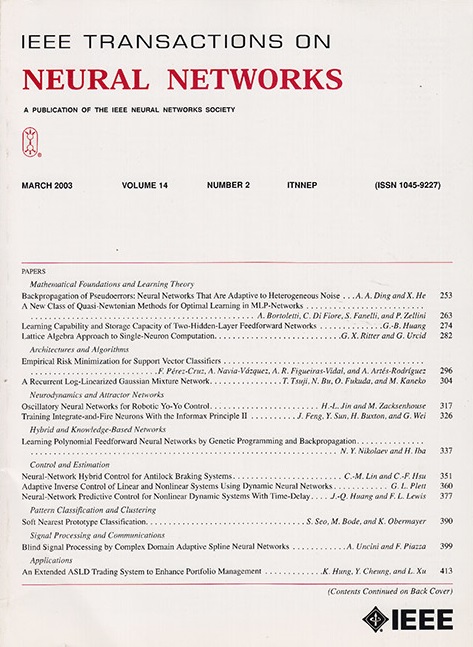Bayesian Hierarchical Graph Neural Networks With Uncertainty Feedback for Trustworthy Fault Diagnosis of Industrial Processes
IF 10.2
1区 计算机科学
Q1 COMPUTER SCIENCE, ARTIFICIAL INTELLIGENCE
IEEE transactions on neural networks and learning systems
Pub Date : 2023-10-16
DOI:10.1109/TNNLS.2023.3319468
引用次数: 0
Abstract
Deep learning (DL) methods have been widely applied to intelligent fault diagnosis of industrial processes and achieved state-of-the-art performance. However, fault diagnosis with point estimate may provide untrustworthy decisions. Recently, Bayesian inference shows to be a promising approach to trustworthy fault diagnosis by quantifying the uncertainty of the decisions with a DL model. The uncertainty information is not involved in the training process, which does not help the learning of highly uncertain samples and has little effect on improving the fault diagnosis performance. To address this challenge, we propose a Bayesian hierarchical graph neural network (BHGNN) with an uncertainty feedback mechanism, which formulates a trustworthy fault diagnosis on the Bayesian DL (BDL) framework. Specifically, BHGNN captures the epistemic uncertainty and aleatoric uncertainty via a variational dropout approach and utilizes the uncertainty information of each sample to adjust the strength of the temporal consistency (TC) constraint for robust feature learning. Meanwhile, the BHGNN method models the process data as a hierarchical graph (HG) by leveraging the interaction-aware module and physical topology knowledge of the industrial process, which integrates data with domain knowledge to learn fault representation. Moreover, the experiments on a three-phase flow facility (TFF) and secure water treatment (SWaT) show superior and competitive performance in fault diagnosis and verify the trustworthiness of the proposed method.工业过程可靠故障诊断的不确定性反馈贝叶斯层次图神经网络。
深度学习(DL)方法已被广泛应用于工业过程的智能故障诊断,并取得了最先进的性能。然而,使用点估计的故障诊断可能提供不可信的决策。最近,贝叶斯推理通过用DL模型量化决策的不确定性,被证明是一种很有前途的可靠故障诊断方法。训练过程中不涉及不确定性信息,这无助于高度不确定性样本的学习,对提高故障诊断性能也没有什么作用。为了应对这一挑战,我们提出了一种具有不确定性反馈机制的贝叶斯层次图神经网络(BHGNN),该网络在贝叶斯DL(BDL)框架上制定了一个值得信赖的故障诊断。具体而言,BHGNN通过变分丢弃方法捕获认知不确定性和任意不确定性,并利用每个样本的不确定性信息来调整时间一致性(TC)约束的强度,用于鲁棒特征学习。同时,BHGNN方法利用工业过程的交互感知模块和物理拓扑知识,将过程数据建模为层次图,将数据与领域知识相结合,学习故障表示。此外,在三相流设备(TFF)和安全水处理(SWaT)上的实验表明,该方法在故障诊断方面具有优越性和竞争力,并验证了该方法的可靠性。
本文章由计算机程序翻译,如有差异,请以英文原文为准。
求助全文
约1分钟内获得全文
求助全文
来源期刊

IEEE transactions on neural networks and learning systems
COMPUTER SCIENCE, ARTIFICIAL INTELLIGENCE-COMPUTER SCIENCE, HARDWARE & ARCHITECTURE
CiteScore
23.80
自引率
9.60%
发文量
2102
审稿时长
3-8 weeks
期刊介绍:
The focus of IEEE Transactions on Neural Networks and Learning Systems is to present scholarly articles discussing the theory, design, and applications of neural networks as well as other learning systems. The journal primarily highlights technical and scientific research in this domain.
 求助内容:
求助内容: 应助结果提醒方式:
应助结果提醒方式:


